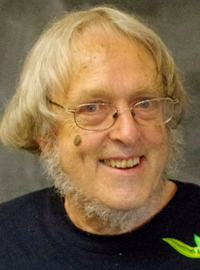ENSPM2021 Talk
Title: Conversations between graphs and groups
Abstract: Groups and graphs are the most commonly studied topics in their areas of mathematics, algebra and discrete mathematics. They are very different characters; groups are highly structured (as witnessed by the Classification of Finite Simple Groups) whereas graphs exist in great profusion. But these very different topics have a lot to say to each other. In my talk I will describe some conversations between groups and graphs, from which both sides (as well as other parts of mathematics) take great benefit. Among the topics I hope to consider are Cayley graphs (the basis of geometric group theory), other graphs defined on groups such as the commuting graph (whose birth coincided with the program to classify simple groups by centralisers of involutions), and applications to polytopes, automata theory and symbolic dynamics.
Peter Cameron (St Andrews University, Scotland)
Australian mathematician currently at the University of St Andrews and previously at Queen Mary University of London and Oxford. Cameron wrote the paper that triggered the industry of extracting results from the Classification of Finite Simple Groups and is one of the solvers of the Sims conjecture; he has also important contributions to combinatorics, automata theory and semigroups; wrote many books about combinatorics, algebra, permutation groups, and logic, their mix in oligomorphic permutation groups, and has produced over 250 academic papers. He posed the Cameron–Erdős conjecture with Paul Erdős, eventually proved by Ben Green. Recently, with some colleagues, managed to characterize the one of the most elusive classes of groups in the O’Nan-Scott theorem (the groups of diagonal type) as the permutation groups preserving some combinatorial structure, certainly one of the greatest theorems in the area. Only three persons received both the junior and senior Whitehead Prize, Cameron being one of them. He is also joint winner of the 2003 Euler Medal. In 2018 was elected Fellow of the Royal Society of Edinburgh. His blog is considered among the most influential mathematics blogs.

